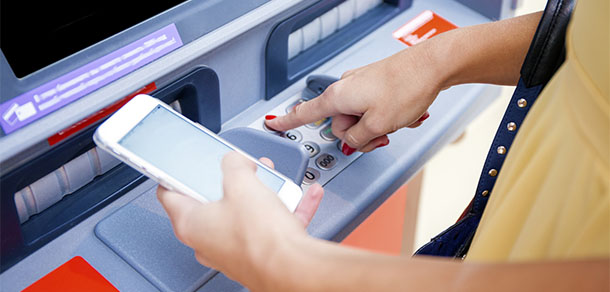Biometric ATMs use facial recognition instead of cards and PINs
26 July, 2017
category: Biometrics, Financial
A new biometric ATM seeks to use biometric identity and phones, not cards and PINs, as the keys to allow consumers to access their cash. The Diebold Nixdorf and Samsung technology relies on facial recognition, and it stands as the latest advance in biometric payment efforts.
The Diebold and Samsung effort represents another fledgling effort to make facial recognition a more common part of payments and transactions
“Samsung is making it easier for consumers to interact with their banks and ATMs using biometric information and eliminating the need for a physical card and PIN,” explains Scott Koo, CEO of Samsung SDS America.
The Diebold ATM uses FIDO-certified Samsung SDS Nexsign technology for the biometric payment authentication. Here’s how the process works:
- Consumers wanting to use the ATM set up the desired transaction on their mobile banking app before heading to the ATM.
- Consumers tap their Samsung Galaxy S8 mobile device against the NFC reader on the ATM (the two companies say the technology also works with other devices running Android and iOS).
- After the transaction is confirmed, the ATM offers a prompt to complete authentication via facial recognition on consumers’ mobile devices.
- With verification complete, cash is dispensed without the need for payment cards and PINs.
Speed and security stand as the main benefits of biometric authentication at the ATM. Not only will criminals have a harder time breaking into a consumer’s account if it is protected by facial recognition, but Diebold and Samsung say transactions at this biometric ATM are faster, “less than half the time of a standard ATM transaction.”
Biometric ATMs hint to rise of biometric, secure auth in payments
It remains unclear when and where the companies might deploy these biometric ATMs, a model of which was demonstrated in June at the Digital Banking Conference in Texas. But the Diebold and Samsung effort represents another fledgling effort to make facial recognition a more common part of payments and transactions.
NEC Corp., for instance, has tested facial recognition technologies for biometric payments at small shops inside its head office building in Tokyo. And late last year, Mastercard began rolling out a pay-by-selfie service in Europe. The technology creates a pop-up asking for authentication when an online shopper is at the checkout phase. She then is given the option of providing a fingerprint or facial scan, the latter of which requires her to look at the phone’s camera and blink once (to avoid a scammer holding up a still photo of the user). The photo then is converted to a digital code, which is sent to Mastercard for authentication.


